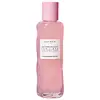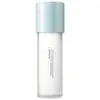What's inside
What's inside
 Key Ingredients
Key Ingredients

 Benefits
Benefits

 Concerns
Concerns

 Ingredients Side-by-side
Ingredients Side-by-side

Opuntia Ficus-Indica Extract
Skin ConditioningCitrullus Lanatus Fruit Extract
Skin ConditioningGlycerin
HumectantHyaluronic Acid
HumectantGluconolactone
Skin ConditioningSodium Polyglutamate
HumectantBetaine Salicylate
AntimicrobialSalix Alba Bark Extract
AstringentMelaleuca Alternifolia Leaf Extract
PerfumingHibiscus Sabdariffa Flower Extract
Skin ConditioningLactobacillus/Watermelon Fruit Ferment Extract
Skin ConditioningCucumis Sativus Fruit Extract
EmollientSaccharum Officinarum Extract
MoisturisingGlycyrrhiza Glabra Root Extract
BleachingScutellaria Baicalensis Root Extract
AstringentPaeonia Suffruticosa Root Extract
Skin ProtectingBrassica Oleracea Capitata Leaf Extract
Skin ConditioningIpomoea Batatas Root Extract
Skin ConditioningSorbitan Oleate
EmulsifyingLevulinic Acid
PerfumingSodium Levulinate
Skin ConditioningParfum
MaskingOpuntia Ficus-Indica Extract, Citrullus Lanatus Fruit Extract, Glycerin, Hyaluronic Acid, Gluconolactone, Sodium Polyglutamate, Betaine Salicylate, Salix Alba Bark Extract, Melaleuca Alternifolia Leaf Extract, Hibiscus Sabdariffa Flower Extract, Lactobacillus/Watermelon Fruit Ferment Extract, Cucumis Sativus Fruit Extract, Saccharum Officinarum Extract, Glycyrrhiza Glabra Root Extract, Scutellaria Baicalensis Root Extract, Paeonia Suffruticosa Root Extract, Brassica Oleracea Capitata Leaf Extract, Ipomoea Batatas Root Extract, Sorbitan Oleate, Levulinic Acid, Sodium Levulinate, Parfum
Water
Skin ConditioningButylene Glycol
HumectantDipropylene Glycol
Humectant1,2-Hexanediol
Skin ConditioningBetaine
HumectantTrehalose
HumectantDiethoxyethyl Succinate
SolventPPG-13-Decyltetradeceth-24
EmulsifyingXanthan Gum
EmulsifyingEthylhexylglycerin
Skin ConditioningParfum
MaskingMentha Arvensis Leaf Extract
MaskingDisodium EDTA
Hydrolyzed Hyaluronic Acid
HumectantPropanediol
SolventGluconolactone
Skin ConditioningAureobasidium Pullulans Ferment
Skin ConditioningLactobacillus/Soybean Ferment Extract
Skin ConditioningYeast Ferment Extract
Skin ConditioningTocopherol
AntioxidantUndaria Pinnatifida Extract
Skin ConditioningWater, Butylene Glycol, Dipropylene Glycol, 1,2-Hexanediol, Betaine, Trehalose, Diethoxyethyl Succinate, PPG-13-Decyltetradeceth-24, Xanthan Gum, Ethylhexylglycerin, Parfum, Mentha Arvensis Leaf Extract, Disodium EDTA, Hydrolyzed Hyaluronic Acid, Propanediol, Gluconolactone, Aureobasidium Pullulans Ferment, Lactobacillus/Soybean Ferment Extract, Yeast Ferment Extract, Tocopherol, Undaria Pinnatifida Extract
 Reviews
Reviews

Ingredients Explained
These ingredients are found in both products.
Ingredients higher up in an ingredient list are typically present in a larger amount.
Gluconolactone is a PHA. PHAs are a great gentle alternative to traditional AHAs.
When applied, Gluconolactone has the same affect on skin as AHAs such as lactic acid. It helps dissolve the dead skin cells in the top layer of your skin. This improves texture and brightens the skin.
PHAs are more gentle than AHAs due to their larger structure. They do not penetrate as deeply as AHAs and take a longer time to dissolve dead cells. Studies show PHAs do not cause as much irritation.
Gluconolactone has some interesting properties:
In a 2004 study, Gluconolactone was found to prevent UV damage in mouse skin cells and has not been found to increase sun sensitivity. However, we still recommend wearing SPF daily.
This ingredient is is an created by reacting gluconic acid with an alcohol.
Learn more about GluconolactoneParfum is a catch-all term for an ingredient or more that is used to give a scent to products.
Also called "fragrance", this ingredient can be a blend of hundreds of chemicals or plant oils. This means every product with "fragrance" or "parfum" in the ingredients list is a different mixture.
For instance, Habanolide is a proprietary trade name for a specific aroma chemical. When used as a fragrance ingredient in cosmetics, most aroma chemicals fall under the broad labeling category of “FRAGRANCE” or “PARFUM” according to EU and US regulations.
The term 'parfum' or 'fragrance' is not regulated in many countries. In many cases, it is up to the brand to define this term.
For instance, many brands choose to label themselves as "fragrance-free" because they are not using synthetic fragrances. However, their products may still contain ingredients such as essential oils that are considered a fragrance by INCI standards.
One example is Calendula flower extract. Calendula is an essential oil that still imparts a scent or 'fragrance'.
Depending on the blend, the ingredients in the mixture can cause allergies and sensitivities on the skin. Some ingredients that are known EU allergens include linalool and citronellol.
Parfum can also be used to mask or cover an unpleasant scent.
The bottom line is: not all fragrances/parfum/ingredients are created equally. If you are worried about fragrances, we recommend taking a closer look at an ingredient. And of course, we always recommend speaking with a professional.
Learn more about Parfum